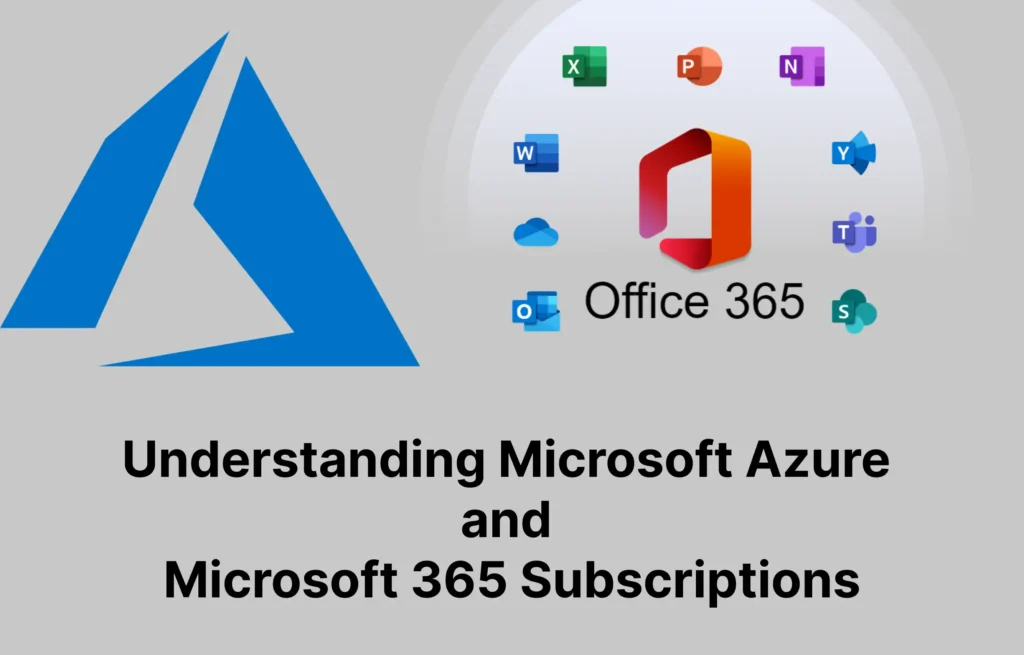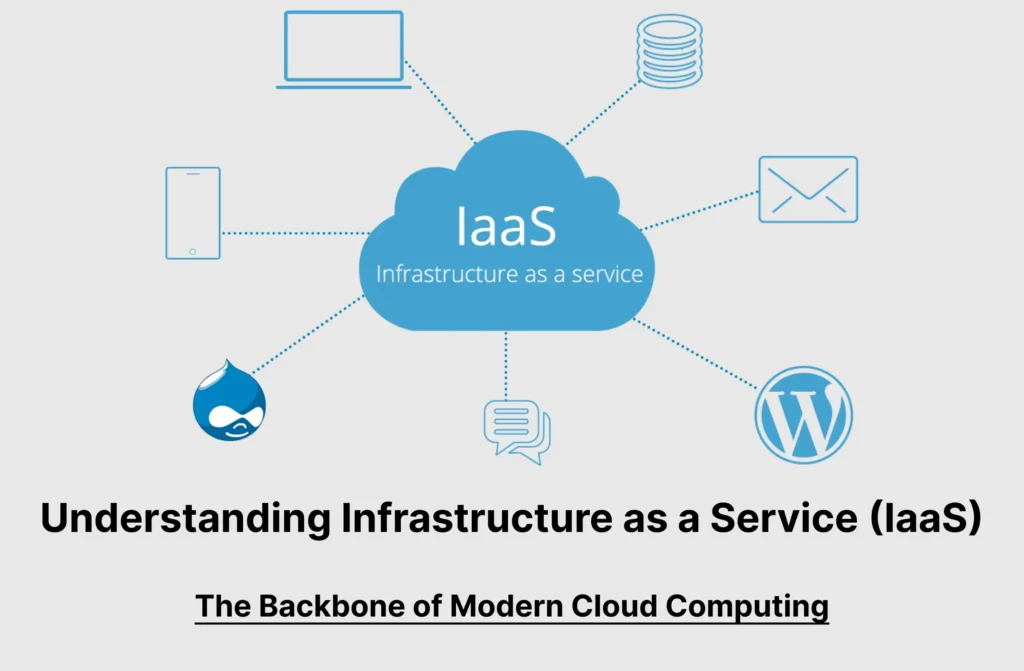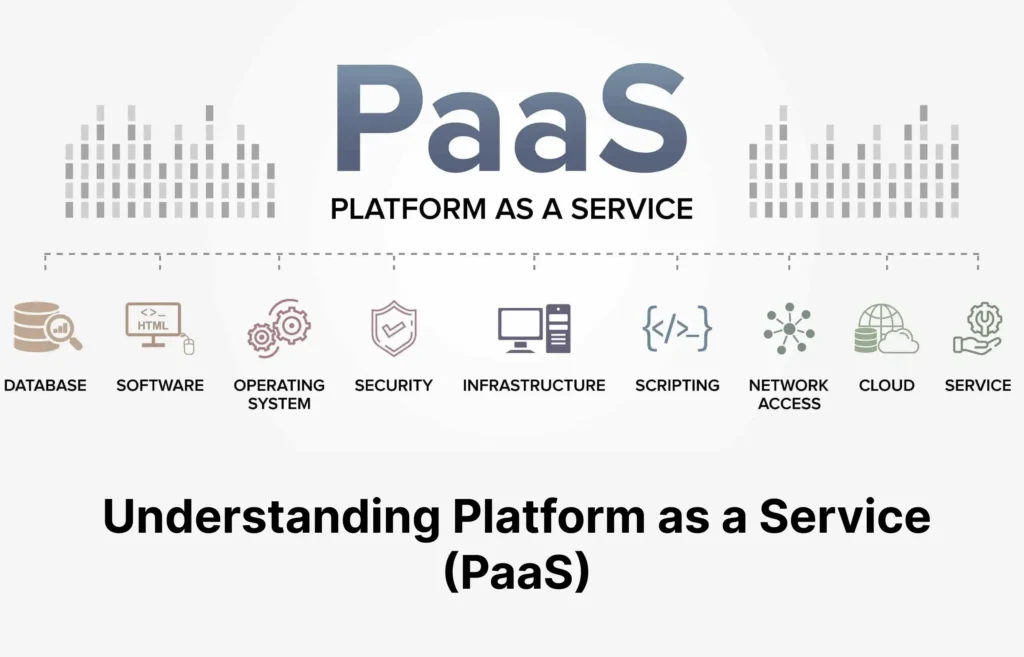Introduction to Cloud Computing
Cloud Computing Solutions. Cloud computing has fundamentally transformed the landscape of information technology, offering a dynamic and scalable alternative to traditional IT infrastructure. At its core, cloud computing involves delivering computing services—including servers, storage, databases, networking, software, and more—over the internet, commonly referred to as “the cloud.” This paradigm shift allows organizations to access and manage these resources on-demand, without the need for substantial capital investment in physical hardware and software.
The journey of cloud computing can be traced back to the early 2000s, when companies like Amazon and Google began leveraging their vast data centers to offer computing resources to external customers. This marked the beginning of a new era in IT, where businesses could harness the power of cloud-based solutions to achieve greater flexibility, efficiency, and cost savings.
One of the fundamental principles of cloud computing is its scalability. Unlike traditional IT setups that require significant planning and investment to scale up, cloud services can be easily adjusted to meet fluctuating demands. This elasticity ensures that businesses only pay for the resources they use, optimizing operational expenses. Additionally, cloud computing promotes accessibility, enabling users to access data and applications from any location with an internet connection, thereby fostering a more mobile and collaborative work environment.
Security and reliability are also key components of cloud computing. Major cloud service providers invest heavily in robust security measures and disaster recovery protocols to protect sensitive data and ensure service continuity. This level of security and reliability often surpasses what most organizations can achieve with their in-house IT infrastructure.
In essence, cloud computing has revolutionized the way businesses operate by providing a flexible, scalable, and cost-effective solution for managing IT resources. As cloud technology continues to evolve, it promises to unlock even greater potential for innovation and efficiency in the digital age.
Keywords: Cloud Computing Solutions, Benefits of Cloud Computing, cloud services, IaaS PaaS SaaS, Trends in Cloud Computing
Explore Category: Technology Solutions – BYQUS
Unlocking the Potential of Cloud Computing Solutions

Table of Contents
Benefits of Cloud Computing
Cloud computing offers a multitude of advantages for businesses, significantly enhancing operational efficiency and strategic flexibility. One of the primary benefits is cost savings. By adopting cloud services, companies can eliminate the need for substantial capital expenditure on hardware and software. Instead, they can leverage a subscription-based model, paying only for the resources they use. This shift not only reduces upfront investment but also lowers ongoing maintenance and operational costs.
Scalability is another crucial advantage. Cloud computing enables businesses to scale their IT resources up or down depending on their needs. This elasticity allows companies to handle varying workloads without the need for extensive infrastructure investment. For instance, during peak periods, additional resources can be provisioned instantly, ensuring seamless performance. Conversely, during off-peak times, resources can be scaled back to save costs.
Flexibility is also a hallmark of cloud computing. With cloud services, employees can access applications and data from anywhere, provided they have an internet connection. This flexibility supports remote work and enhances productivity by allowing teams to collaborate in real-time, regardless of their physical location. Such an arrangement is particularly beneficial in today’s increasingly globalized and mobile workforce.
Disaster recovery is another compelling benefit. Cloud computing solutions offer robust disaster recovery options, ensuring business continuity in the event of data loss or system failures. By storing data in geographically dispersed data centers, companies can quickly recover critical information and resume operations with minimal downtime.
Improved collaboration is facilitated through cloud-based tools and applications. Teams can work together more effectively, sharing documents and resources in real-time. This collaborative environment fosters innovation and accelerates project timelines.
Enhancing security and compliance is another significant advantage. Leading cloud service providers invest heavily in advanced security measures and compliance certifications. These providers implement stringent access controls, encryption techniques, and regular security audits to protect sensitive data. Consequently, businesses can achieve higher levels of security and compliance than they might with on-premises solutions.
Understanding Cloud Service Models: IaaS, PaaS, and SaaS
Cloud Services | IaaS PaaS SaaS
Cloud computing has revolutionized the way businesses operate by offering flexible, scalable, and cost-effective solutions. The three primary cloud service models—Infrastructure as a Service (IaaS), Platform as a Service (PaaS), and Software as a Service (SaaS)—each provide distinct advantages and cater to different business needs.
Infrastructure as a Service (IaaS)
IaaS is a foundational cloud service model that offers virtualized computing resources over the internet. It provides essential infrastructure components like virtual machines, storage, and networking. With IaaS, businesses can avoid the expense and complexity of buying and managing physical servers and data center infrastructure. Key characteristics of IaaS include on-demand scalability, pay-as-you-go pricing, and high availability. This model is particularly beneficial for startups, SMEs, and large enterprises that require flexible and scalable computing resources for various applications, such as hosting websites, running development and testing environments, or managing big data analytics.
Platform as a Service (PaaS)
PaaS offers a higher level of abstraction by providing a complete development and deployment environment in the cloud. This model includes infrastructure (servers, storage, and networking), but also middleware, development tools, database management systems, and business analytics. PaaS simplifies the process of developing, testing, and deploying applications by eliminating the need to manage the underlying hardware and software infrastructure. It is ideal for developers who want to focus on writing code and deploying applications quickly. PaaS is particularly advantageous for projects that require rapid development cycles, such as web applications, mobile applications, and API integrations.
Software as a Service (SaaS)
SaaS delivers software applications over the internet, on a subscription basis. Users can access these applications via web browsers without needing to install or maintain them locally. SaaS solutions cover a wide range of business functions, including customer relationship management (CRM), enterprise resource planning (ERP), and office productivity suites. Key characteristics of SaaS include accessibility, automatic updates, and scalability. This model is especially beneficial for businesses of all sizes that require cost-effective and easily deployable software solutions. SaaS allows organizations to quickly adopt new technologies and improve productivity without significant upfront costs.
In summary, understanding the differences between IaaS, PaaS, and SaaS is crucial for businesses to make informed decisions about their cloud computing strategies. Each model offers unique advantages tailored to specific needs, empowering organizations to unlock the full potential of cloud computing solutions.
Popular Cloud Platforms: AWS, Azure, and Google Cloud
Amazon Web Services (AWS), Microsoft Azure, and Google Cloud Platform (GCP) are the leading giants in the realm of cloud computing, each offering a robust suite of services catering to a diverse range of business needs. AWS, for instance, is renowned for its extensive service offerings, including computing power, storage options, and scalable infrastructure. One of its standout features is the AWS Lambda, which allows users to run code without provisioning or managing servers, making it highly appealing for developers focused on building microservices architectures.
In terms of pricing, AWS operates on a pay-as-you-go model, providing flexibility but also requiring careful management to avoid unexpected costs. Azure, on the other hand, integrates seamlessly with Microsoft’s ecosystem, making it the go-to platform for enterprises heavily invested in Microsoft products. Azure’s hybrid cloud capabilities, such as Azure Arc, enable businesses to manage and secure applications across diverse environments, offering a unique advantage.
Google Cloud Platform distinguishes itself with its advanced data analytics, machine learning, and artificial intelligence tools. Services like BigQuery and TensorFlow position GCP as a preferred choice for data-centric enterprises. Additionally, Google’s commitment to open-source technologies and multi-cloud strategies enhances its appeal to modern, agile businesses looking to avoid vendor lock-in.
When it comes to performance, AWS’s global network of data centers provides low-latency access to services, ensuring optimal performance for global enterprises. Azure boasts a similarly expansive network, with a particular strength in supporting enterprise-grade applications and workloads. GCP leverages Google’s extensive infrastructure, known for its speed and reliability, offering competitive performance metrics.
Real-world examples highlight each platform’s strengths. Netflix’s use of AWS showcases its scalability and robustness, while Starbucks leverages Azure to streamline its operations and enhance customer experiences. Snapchat’s reliance on GCP underscores Google’s prowess in handling large-scale data processing and machine learning workloads.
In conclusion, the choice between AWS, Azure, and GCP ultimately depends on an organization’s specific needs, existing infrastructure, and long-term strategic goals. Each platform brings unique strengths to the table, making them all viable options in the dynamic landscape of cloud computing solutions.
Leveraging Cloud Technologies for Business Scalability
Cloud computing has revolutionized the way businesses approach scalability, providing unprecedented flexibility and efficiency. One of the key advantages of cloud technologies is the ability to leverage autoscaling. Autoscaling allows businesses to dynamically adjust their computing resources based on actual demand. This means that during peak periods, additional resources can be automatically provisioned to handle increased workloads, and during off-peak times, resources can be scaled down to reduce costs. This capability ensures that businesses can maintain optimal performance without over-provisioning, leading to significant cost savings.
Another major benefit of cloud computing is its global reach. Cloud service providers offer a network of data centers located around the world. This allows businesses to deploy their applications and services closer to their customers, reducing latency and improving user experience. Additionally, global reach facilitates business expansion into new markets with minimal infrastructure investment. Companies can quickly establish a presence in new regions without the need for extensive physical hardware, making it easier to reach a broader audience.
Cloud solutions also excel in handling fluctuating workloads. Traditional on-premises infrastructure often struggles to cope with sudden spikes in demand, leading to performance bottlenecks and potential downtime. Cloud platforms, however, are designed to manage variable workloads efficiently. With cloud-based services, businesses can seamlessly accommodate traffic surges, ensuring continuous availability and reliability. This is particularly beneficial for e-commerce platforms, streaming services, and other businesses that experience variable traffic patterns.
Furthermore, cloud computing supports business growth by providing access to a wide range of advanced tools and services. From data analytics and machine learning to artificial intelligence and Internet of Things (IoT) capabilities, cloud platforms offer resources that can drive innovation and enhance competitive advantage. By utilizing these technologies, businesses can streamline their operations, improve decision-making, and create new opportunities for growth.
In conclusion, leveraging cloud technologies is essential for businesses looking to scale efficiently. By taking advantage of autoscaling, global reach, and the ability to handle fluctuating workloads, companies can achieve greater agility and cost-effectiveness. The cloud’s extensive suite of tools further supports business growth, enabling expansion into new markets and driving innovation.
Reducing IT Costs with Cloud Computing
The financial benefits of adopting cloud computing solutions are significant, particularly when it comes to cost reduction. One of the primary advantages is the shift from capital expenditure (CapEx) to operational expenditure (OpEx). Traditional IT infrastructure demands substantial initial investments in hardware, software, and other resources, all classified under CapEx. These upfront costs can be a considerable burden for many organizations, especially small and medium-sized enterprises (SMEs). In contrast, cloud computing allows businesses to convert these large, one-time expenses into manageable, ongoing operational expenses, or OpEx. This shift not only reduces financial strain but also provides greater flexibility and scalability.
Another critical aspect of cost reduction in the cloud is the pay-as-you-go pricing model. Cloud service providers offer a consumption-based billing system, enabling businesses to pay only for the resources they actually use. This model eliminates the need for over-provisioning and ensures that companies are not wasting money on unused capacity. Moreover, this approach allows for better budget predictability and financial planning, as costs align more closely with actual usage patterns.
Furthermore, migrating to the cloud helps organizations avoid the ongoing costs associated with maintaining traditional IT infrastructure. On-premise systems require continuous investments in upgrades, patches, and security measures to remain functional and secure. These maintenance tasks often necessitate a dedicated IT team, resulting in additional labor costs. By leveraging cloud computing, businesses can offload these responsibilities to cloud service providers, who manage and update the infrastructure as part of their service offering. This not only reduces direct costs but also frees up internal IT staff to focus on more strategic initiatives, thereby driving further value for the organization.
In summary, cloud computing offers a compelling case for reducing IT costs. Through the transition from CapEx to OpEx, the adoption of pay-as-you-go pricing, and the elimination of traditional infrastructure maintenance expenses, businesses can achieve substantial financial benefits. These savings, coupled with the added flexibility and scalability of cloud solutions, make cloud computing an attractive option for organizations looking to optimize their IT expenditures.
Challenges and Considerations in Cloud Adoption
Adopting cloud computing solutions presents numerous advantages, yet it is not without its challenges. One prominent concern is data privacy and security. As organizations move their data to cloud environments, ensuring that sensitive information remains protected becomes paramount. Data breaches and unauthorized access can have severe consequences, making it essential to implement robust security measures. Encryption, regular security audits, and strict access controls are critical practices to safeguard data in the cloud.
Another significant challenge is vendor lock-in. Organizations often find themselves dependent on a single cloud service provider, which can limit flexibility and increase costs over time. To mitigate this risk, it is advisable to adopt a multi-cloud strategy, distributing workloads across multiple vendors. This approach not only fosters competition among providers, potentially reducing costs, but also enhances resilience by avoiding a single point of failure.
The complexity of cloud migration is another obstacle that organizations must navigate. Transitioning from on-premises infrastructure to the cloud involves meticulous planning and execution. It is crucial to conduct a comprehensive assessment of existing workloads and determine their compatibility with cloud environments. Legacy applications may require refactoring or re-architecting to function optimally in the cloud. Engaging with experienced cloud migration specialists can streamline this process, ensuring a smooth and efficient transition.
To overcome these challenges, organizations should adopt best practices tailored to their specific needs. Establishing clear governance frameworks, defining roles and responsibilities, and creating a detailed migration roadmap are essential steps. Additionally, ongoing training and upskilling of IT teams are vital to keep pace with evolving cloud technologies and security protocols.
In summary, while the adoption of cloud computing solutions can be complex, the challenges are manageable with careful planning and strategic execution. By addressing data privacy concerns, avoiding vendor lock-in, and managing the intricacies of cloud migration, organizations can unlock the full potential of cloud computing, reaping its numerous benefits while minimizing risks.
Future Trends in Cloud Computing
As cloud computing continues to evolve, several key trends are poised to shape its future landscape. One of the most promising developments is the integration of edge computing. By processing data closer to its source, edge computing reduces latency and enhances real-time data analysis. This capability is particularly beneficial for industries requiring immediate insights, such as healthcare, manufacturing, and autonomous vehicles. In essence, edge computing extends the power of cloud computing beyond centralized data centers, enabling faster and more efficient data processing.
Another significant trend is the rise of serverless architectures. This paradigm allows developers to build and deploy applications without managing the underlying infrastructure. Serverless computing offers scalability and cost-efficiency, as resources are automatically allocated based on demand. This model simplifies the development process and accelerates time-to-market for new applications. As a result, businesses can focus on innovation and strategic initiatives rather than infrastructure management.
Artificial intelligence (AI) integration is also transforming cloud computing. Cloud platforms now offer AI and machine learning services that enable organizations to harness advanced analytics and automation. These capabilities facilitate predictive maintenance, customer behavior analysis, and personalized experiences. AI-driven cloud services empower businesses to make data-driven decisions and optimize operations. The convergence of AI and cloud computing is expected to drive significant advancements in areas such as natural language processing, image recognition, and predictive analytics.
Furthermore, the future of cloud computing will likely see increased adoption of hybrid and multi-cloud strategies. Organizations are leveraging multiple cloud providers to enhance flexibility, avoid vendor lock-in, and optimize costs. This multi-cloud approach allows businesses to tailor their cloud environments to specific workloads and requirements. As cloud technology continues to advance, interoperability and seamless integration across different cloud services will become crucial for maximizing efficiency and performance.
Overall, these emerging trends indicate that cloud computing will remain a dynamic and transformative force in the IT landscape. Businesses that embrace these advancements will be better positioned to innovate, compete, and thrive in an increasingly digital world.
Keywords: Cloud Computing Solutions, Benefits of Cloud Computing, cloud services, IaaS PaaS SaaS, Trends in Cloud Computing




